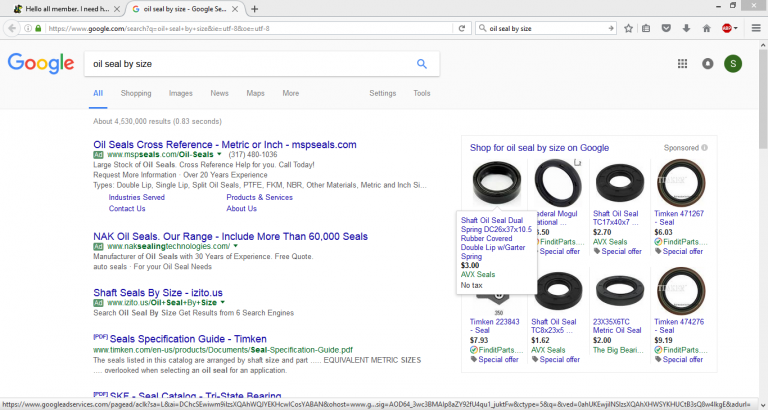| Hello all member. I need help about Cummins ISX Turbo |
| 11-26-2016, (Subject: Hello all member. I need help about Cummins ISX Turbo ) Post: #10 | |||
| |||
| RE: Hello all member. I need help about Cummins ISX Turbo | |||
| 11-26-2016, (Subject: Hello all member. I need help about Cummins ISX Turbo ) Post: #11 | |||
| |||
RE: Hello all member. I need help about Cummins ISX Turbo (11-26-2016 )Dcolumbia Wrote: ... Totally wrong!@ -- Turbo does NOT need back-pressure for it not to leak on exhaust side. complete horse-wash!. -- throw those thoughts in the trash can. User's Signature: ->: What I post is just my own thoughts and Opinions! --- I AM Full Of S__T!. | |||
| 11-26-2016, (Subject: Hello all member. I need help about Cummins ISX Turbo ) Post: #12 | |||
| |||
| RE: Hello all member. I need help about Cummins ISX Turbo The very design of a turbo is to create back pressure. They are a restriction of the dynamic air flow, this restriction creates the force that drives the turbo and creates positive pressure on the other side of the turbo resulting in a forced induction system. The oil seal on the exhaust side of the shaft uses the exhaust gas pressure to assist in keeping the seal sealed, just like the intake side uses the boost pressure to keep the shaft seal closed on the cold side. If you installed these seals backwards, (physically cant, but if) it would result in massive crankcase pressurization because instead of closing the seals, it would open them. Which is why you need to properly set the VGT closing % at idle in the @m*m^2 tune. Insufficient closing % causes an intake vacuum, which allows oil to be sucked out the shaft seal of the turbo into the intake tract of the engine. Upstream and downstream. Think of an upstream valve or seal like a door that opens in, you can push out on it all day and it won't open, because it needs to go "upstream" to open. This is how the turbo shaft oil seals are, gas pressure forces them closed. Think of a downstream valve or seal like a door that opens out, it takes very little effort to open out, because it opens "downstream" with the flow. This is what happens to the cold side turbo shaft oil seal when the VGT closing % is insufficient allowing a vacuum situation to draw oil vapor past the seal from the crankcase into the intake tract. But all of this BS aside, Rawze is still correct as this is NOT what is commonly referred to as back pressure. The commonly referred to back pressure is the exhaust gas flow resistance POST TURBO that disappears with a mandate removal...however the critical PRE TURBO back pressure to maintain upstream turbo shaft oil seal stability is still very much in effect, or your turbo would never spin. at least on the turbos I have destroyed and disassembled to learn about...I have never disassembled a Holset VGT, but I am assuming the shaft oil seal design system is similar. You still have a moving part (shaft) and a stationary part (housing) with a lubricated bearing that must be kept free of contaminant intrusion (sealed) User's Signature: Why? Why do I always ask "why?" Because I can't learn or help teach others with "'cause I said so..." | |||
| « Next Oldest | Next Newest » |
NOTE: Rawze.com is not affiliated, nor endorses any of the google ads that are displayed on this website.





